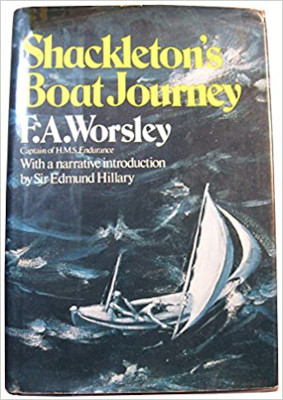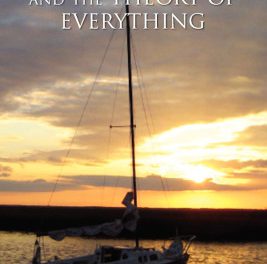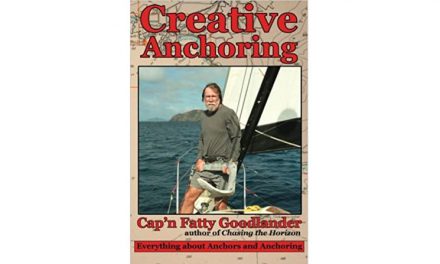
Most readers of Good Old Boat are likely to have a good old sense of adventure. Quite a few will harbor dreams of striking out to distant horizons aboard their less-than-state-of-the-art vessels. Shackleton’s Boat Journey simultaneously satisfies our appetites for vicarious adventure and reminds us why we reserve the bulk of our adventurousness for the imagination: it is not the risk of disaster to our frail ships as much as the certainty of profound discomfort to body and mind. In Shackleton’s historic boat journey, the boats fared remarkably well, but the discomfort rose to a colossal scale.
For those who do not know or have forgotten the details of this chapter of Antarctic exploration, Sir Ernest Shackleton was one of the major players in the early 20th century race to be first to the South Pole. Since he neither won the race nor died trying, he is less well remembered today than Amundsen and Scott, though the sum of his achievements was arguably greater than either of these explorers. His achievements on the ice were matched by his heroic journey of escape by sea and the rescue of his whole party, which is the story of this book. In the spring of 1915, the expedition’s ship, HMS Endurance, was crushed by ice and eventually sank. The crew and expedition members were forced to make their escape over the shifting pack ice. They eventually found shelter on Elephant Island at the edge of the ice in April of 1916 as winter was taking hold. No one in the outside world knew of their fate or their whereabouts, and they were most unlikely to be rescued by chance from those isolated wastes.
The only possibility of long-term survival was for a small groupof men to take one of the ship’s remaining lifeboats and sail it across the Southern Ocean to raise assistance for the larger group that would remain on the island through the winter. This book tells the story of the voyage that Shackleton and five members of his team made from Elephant Island to the whaling station of South Georgia in early winter through the worst seas in the world. It was a journey of more than 1,000 miles in a 22-foot open wooden boat, with no more than a canvas cover, an excess of ballast, and a freeboard that had been extended to just over two feet by the expedition’s resourceful carpenter. The James Caird was named after the principal sponsor of the expedition and was a double-ended, clinker-built lifeboat. It had already been patched after being holed by ice. Its sailing abilities are not explained in any detail, though the little boat managed to perform some remarkable escapes from deadly shores, despite its makeshift rig.
The slender volume is introduced with a substantial essay by Sir Edmund Hillary, of Everest fame. He is connected to this story both by his own low-temperature adventures and by the New Zealand nationality he shares with the author of the book, Frank Worsley. The introduction proves useful since Worsley, captain of HMS Endurance and navigator for this boat journey, wastes little time setting the scene or explaining the times, writing as he was to readers in 1956. The book has been reissued a number of times over the years. This latest paperback edition is nicely produced, with a set of evocative photographs from the expedition.
Worsley’s story of the voyage is mostly spare, clean prose, describing the mechanics of survival by a small band of “dirty, smelly little men in Burberry overalls.” Nonetheless, the text frequently breaks into poetic evocation of the seascape and the elements, the hardships, and the wonders of “hooch,” the miraculous hot soup that nourished them through their long and painful struggle. These flights of eloquence draw the reader into the experience in a compelling way despite the occasional shocks that come from encountering the political incorrectness of a different era and the schoolboy humor of these dedicated servants of the Empire, many of whom would return home only to die within a few months in the trenches of World War I.
Like much biographical prose, this account is uplifting to the spirit, reminding us in condensed form of the wonders of human endurance, companionship, and practical skill. It also reminds us of the powerful and particular value of a good old boat in the right hands and the scale of achievement that is possible with courage in the absence of equipment.
Shackleton’s Boat Journey: by F. A. Worsley (W.W. Norton & Company, 1999)




